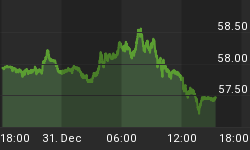Many have written, including myself, about how a flood of unskilled labour into the US can drive down domestic wage rates. On this question Paul Krugman appears perfectly sane, for a change, while the Wall Street Journal seems to have gone loco, completely abandoning economic analysis in favour of wishful thinking and phony moralising.
However, a consensus seems to have emerged that the benefits of importing highly skilled labour are indisputable. Yet six years ago the National Research Council, an advisory body to the US Government, issued a report showing that the influx of qualified foreign workers into the US slowed down the rate at which wages would otherwise have risen in high-tech industries.
The committee estimated that high-tech firms employed more than 5 million workers in high-tech positions. About 255,000 of these skilled workers were in the US under a visa program for skilled tech workers. A bill that had been recently signed into law by President Clinton allowed more than additional 195,000 skilled technology workers to enter the US, raising the number of foreign workers to about 25 percent of the high-tech industry's workforce.
Critics of the program complained that companies like Microsoft used the visa program to keep wages down and avoid the costs of training labour, particularly from minority groups. Alan Merten, chairman of the workforce committee and president of George Mason University, argued that the country had become dependent on foreign workers and their competition was depressing wages. The companies responded by arguing that the industry could not have grown without these foreign workers.
The economic aspect of the this problem is not as straightforward as it might appear. It is true, as critics point out, that an increased supply of skilled labour into a high-tech industry, or any other kind of industry for that matter, usually tends to exert a downward pressure on wage growth. But the question that needs to be addressed is whether this process harms consumers?
Employees in these industries are no more entitled to high wages as a matter of right than their employers are entitled to profits. So long as highly skilled foreign workers flow into the industry it will continue to expand, barring recession. The flow of workers will also encourage the formation of new firms that will compete for labour as well as customers. (It needs to be acknowledged that these new firms need not be capital intensive).
Critics ignored the fact that as most of these workers are either Indian or Chinese, they tend to show great entrepreneurial drive when left alone in a comparatively free market. What was also missed is the enormous financial grants that the Chinese and Indian governments were making, and still are, to America's high-tech companies. These grants take the form of free education for their own citizens who then take the fruits of their training to the US. Think of it as foreign aid in reverse.
On the other hand, Alan Merten's argument was of a different degree. Though the increase in high-tech workers will have helped high-tech firms to expand, an overall increase in the workforce without any accompanying increase in investment will certainly depress wage rates in general. Moreover, if the growth in the workforce exceeds investment real incomes must fall. This process would first make its presence felt among unskilled and semi-skilled labour.
Some commentators argue that this is now happening. Whether this is the case or not it still needs investigating. But it should never be forgotten that ultimately it is savings that fuel an economy and entrepreneurship that drives it. If these vital ingredients are missing or are severely restricted then no amount of highly skilled imported labour can save the day.
















